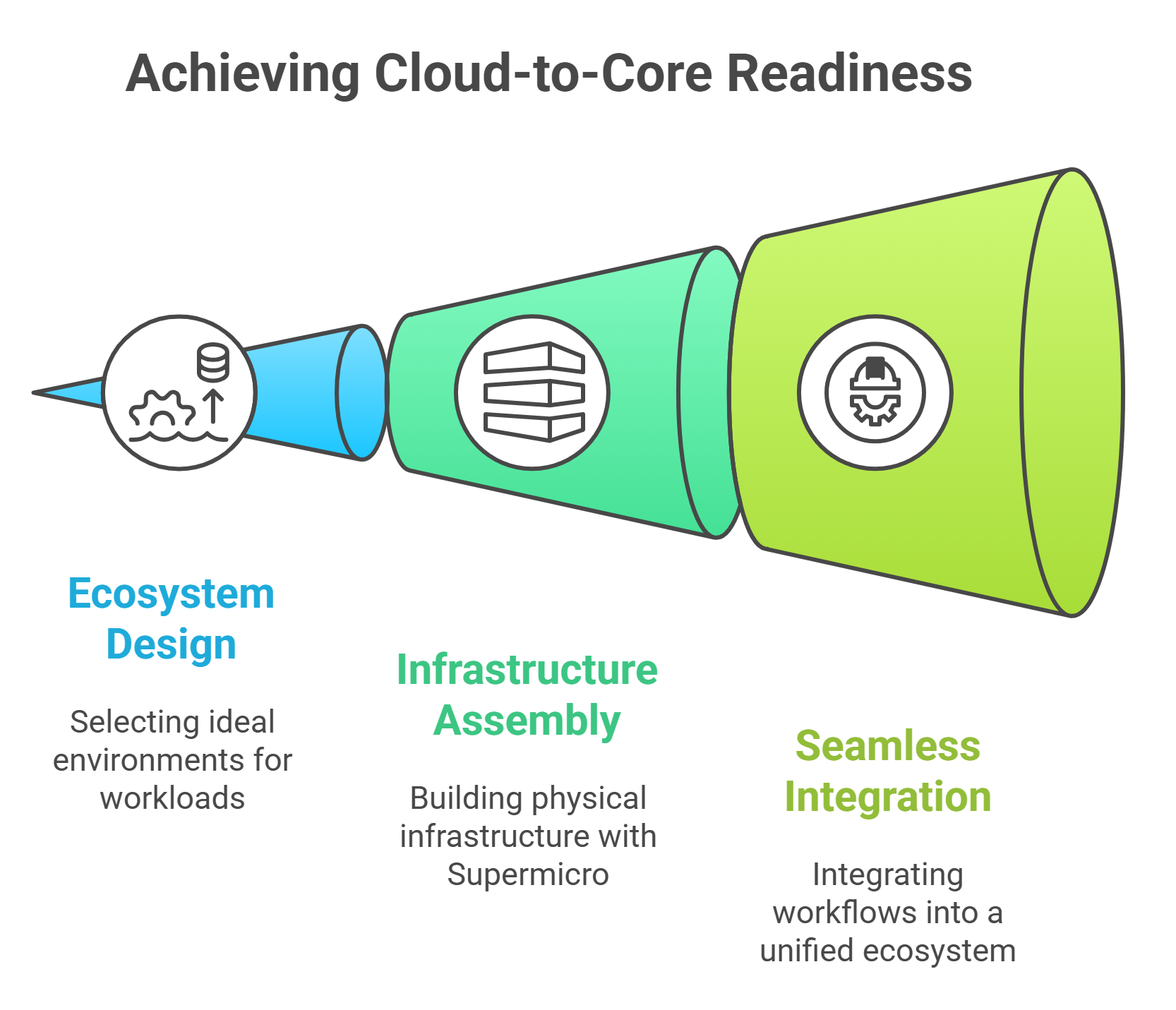The Cloud-First Mindset
Across India, organizations are adopting a ‘cloud-first mindset’ to drive their business transformation. From SaaS migration to AI-enabled services, 67% of Indian companies have already moved some of their applications there in the hopes of fully leveraging the cloud’s scalability, agility and efficiency. Seeing India as a real growth market, many of the top cloud service providers are now opening data centres across the country to become compliant with its increasing set of data regulations.
The ecosystem is certainly there & the cloud can certainly benefit your business, but integration has to be done with a key realization in mind: public clouds are a solution for some for your organizational workloads, not all.
Public Clouds: Not A One Size Fits All Solution
In fact, public clouds are not very ideal when it comes to:
- Certain Regulations: Several Indian compliance laws discourage the use of public clouds in certain use cases – for example, RBI doesn’t allow it for banks when it comes to critical payment processing unless explicitly risk-assessed & approved.
- Certain Workflows: A reason for the aforementioned RBI regulation is the inherent security risk in shared public clouds, but it’s also because public clouds are not suited for any workload that requires high availability & ultra-low latency (real-time trading, manufacturing control systems, defence telemetry, etc.)
- Certain Infrastructures: While planning which applications to take to the cloud, you must be cognizant of the fact that many of your workloads are built on legacy stacks that cannot be moved there without very costly re-engineering.
- Certain AI Processes: Cloud is often considered the go-to for AI workloads. Yet, processes like always-on inference, model retraining/fine-tuning & GPU-based training often end up being too compute heavy for the cloud. That scenario leads to rising costs – studies show cloud GPU costs can be 5-10x higher annually than in-house AI hardware.
Hybrid Environments: The Choice For Digitally Mature Organizations
Therefore, while planning an optimal digital ecosystem for your organization, the ideal approach is to give every workload the right infrastructure to optimize it. That’s why many Indian enterprises choose to incorporate a hybrid model with a mix of cloud, edge and on-premises systems:
The Hybrid Route: Putting The Right Workloads In The Right Place | ||
Cloud | On-Premises | Edge |
|
|
|
If executed well, hybrid environments can optimize your digital infrastructure and help you achieve up to 60% total cost savings when compared to purely traditional or cloud-first setups. Yet, it often becomes overwhelming for internal teams to deal with multiple environments, leading to fragmented policies & a general lack of visibility. In fact, a recent hybrid cloud survey showed that 91% of organizations compromised security when deploying hybrid workloads.
This is where the ‘cloud-first’ mindset makes things worse – the general proclivity to focus attention on cloud-based processes is leading to many organizations often neglecting the physical infrastructures that power so many of their mission-critical processes. The gap is getting concerning – India currently generates around 20% of the world’s data but contains only 3% of its data centre capacity.
Optimizing All Your Environments
Therefore, to truly optimize your hybrid systems, you must achieve something called ‘cloud-to-core readiness’ – an organization’s ability to seamlessly integrate, secure, scale & optimize all workloads across cloud, edge & on-premises (core) infrastructures. This means being architecturally & operationally equipped to run or shift workloads across these layers based on business needs, while maintaining non-negotiables like interoperability, observability, performance, latency control, security & compliance.
By achieving cloud-to-core readiness, you bring about many benefits for your organization:
- Optimized cost & performance
- Full compliance with all local data regulations
- Continuity for your legacy systems through modernisation of its infrastructure
- Avoidance of public cloud lock-in

Achieve True Cloud-To-Core Readiness With The iValue-Supermicro Partnership
iValue’s integration with Supermicro, a tech mainstay that provides the industry’s best computing resources, gives us the capacity to help your organization achieve true cloud-to-core readiness for the digital journey ahead. We can assemble a seamless, secure digital infrastructure for your enterprise through 3 phases.
Phase 1: Consultation & Ecosystem Design
After an initial consultation where we understand the entire scope of your organizational processes, we go about selecting the ideal environments for every workload based on their respective characteristics.
- Cloud Workflow Characteristics: No strict latency or data residency needs, easy to integrate & scale globally, ability to achieve low cost at scale, requiring elastic compute & storage
- On-Premises Workflow Characteristics: Already possessing integrations with legacy infrastructure, needing custom hardware, requiring tight security & strict adherence to compliance requirements
- Edge Workflow Characteristics: Needing low latency, entailing real-time decision making, often in environments with limited or no Internet access
iValue Tip: For very highly regulated industries (defence, finance, etc.), public clouds may be too unsecure for any workload. As such, we offer on-premises private cloud services where you get the inherent security and control of having systems in your turf, but with the cloud’s scalable, elastic qualities.
Phase 2: Physical Infrastructure Assembly
Once the ideal environments are decided, we bring them to life using Supermicro, a tech giant possessing the industry’s widest portfolio of servers. This gives you the best physical infrastructure for your digital ecosystem due to a multitude of reasons:
- The modular, building blocks DNA in Supermicro’s solutions allows for an unprecedented level of customization at server, rack, cluster, cooling & power level – making them tailor-made for your specific workload & application requirements.
- These systems are fully integrated & validated with L11 (rack-level) & L12 (cluster-level) testing to assure plug & play deployment while accelerating your time to online.
- Servers overheating can create damaging bottlenecks, so Supermicro uses state-of-the-art, direct-to-chip liquid cooling technologies that save up to 40% of energy costs.
- Supermicro also has the provision for you to incorporate environmentally-friendly, green data centres into your organization which can create up to 20% more savings while drastically reducing your carbon footprint.
iValue Tip: Some modern AI workflows need their own, curated systems. Supermicro’s new Data Centre Building Block Solution (DCBBS) builds that perfect ecosystem for them using first-to-market GPUs, CPUs, interconnects, storage & networking.
Phase 3: Seamless Integration & Deployment
Now that your workflows and their respective physical infrastructures have been finalized, iValue’s Data Centre Infrastructure (DCI) makes all that into a seamless ecosystem with all boxes ticked for your organization:
- Tailored design & deployment to perfectly augment Supermicro’s hardware
- Security-first ecosystem embedded with stringent data security principles (zero trust, automated monitoring)
- A unified interface that gives you full workload visibility across cloud, on-premises & edge
- Managed, 24×7 infrastructure support to reduce your operational burden
- Compliance adherence aligned with RBI, SEBI, IRDAI, DPDPA, etc.
This makes us ideal for organizations across various industries looking to optimize workloads across all environments.
Industry | Cloud Workflow | On-Premises Workflow | Edge Workflow |
BFSI | AI-based fraud detection models not needing to run real-time | Seamless transaction system compliant with all regulations | Real-time capture & processing of customer transaction data on ATMs |
Manufacturing | Central dashboard for supply chain management & predictive analytics | Inventory Control & Quality Assurance systems | Real-time machine visions & IoT sensory Analytics on the factory floor |
Defense | Public-facing informational systems (website for notices & drills) | Command & control systems completely separated from public networks | Managing all the data coming from battlefield surveillance nodes, tactical drones, sensors, etc. |
Healthcare | APIs that enable appointment scheduling & telemedicine functions | In-house diagnostic image repositories & patient data lakes compliant with HIPAA | On-device inference (MRI, ultrasound) along with ICU monitoring |
So, if you’re looking to create a seamless, secure data centre infrastructure for your specific needs, contact us for an initial consultation with an iValue data security expert.
